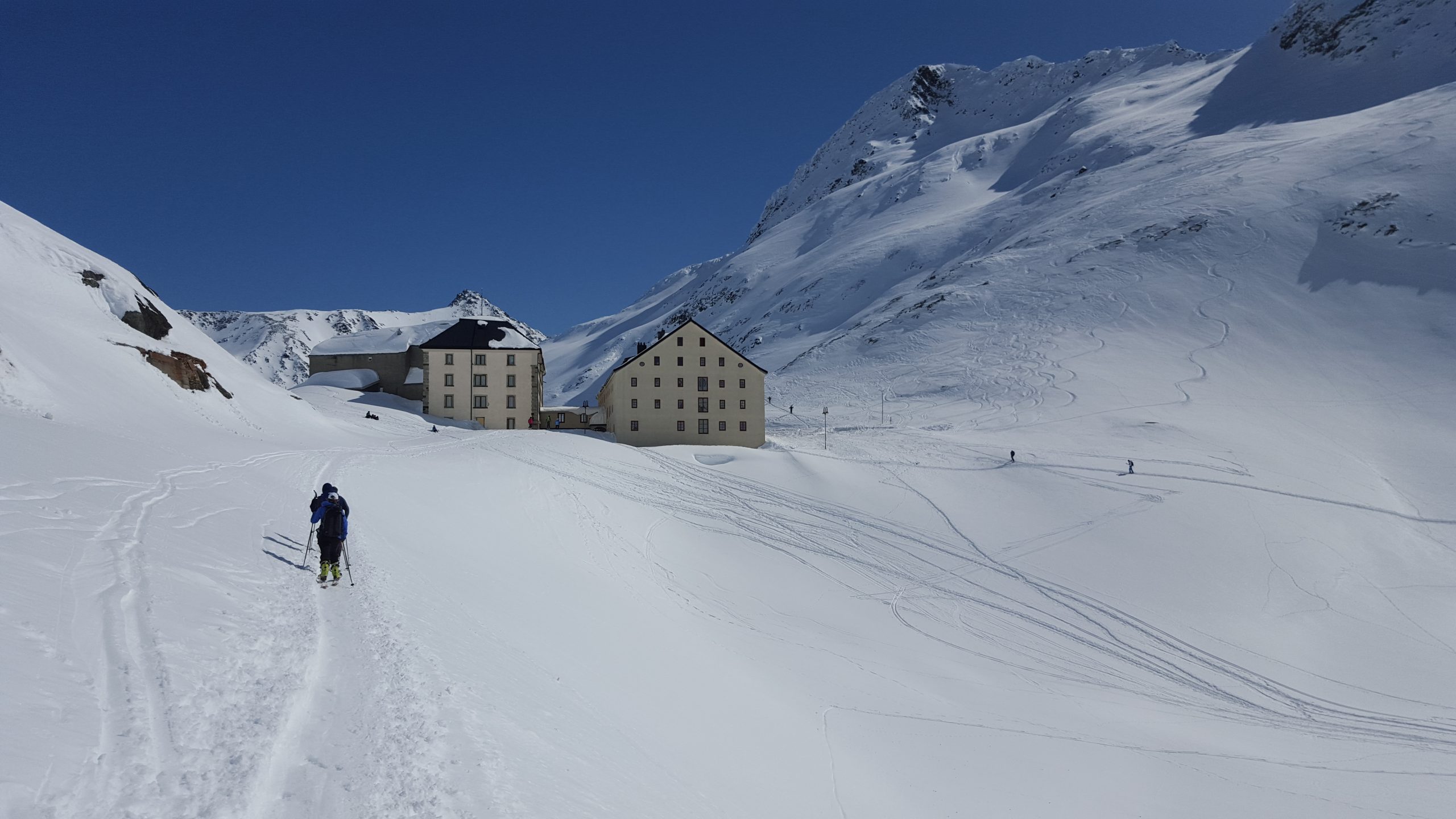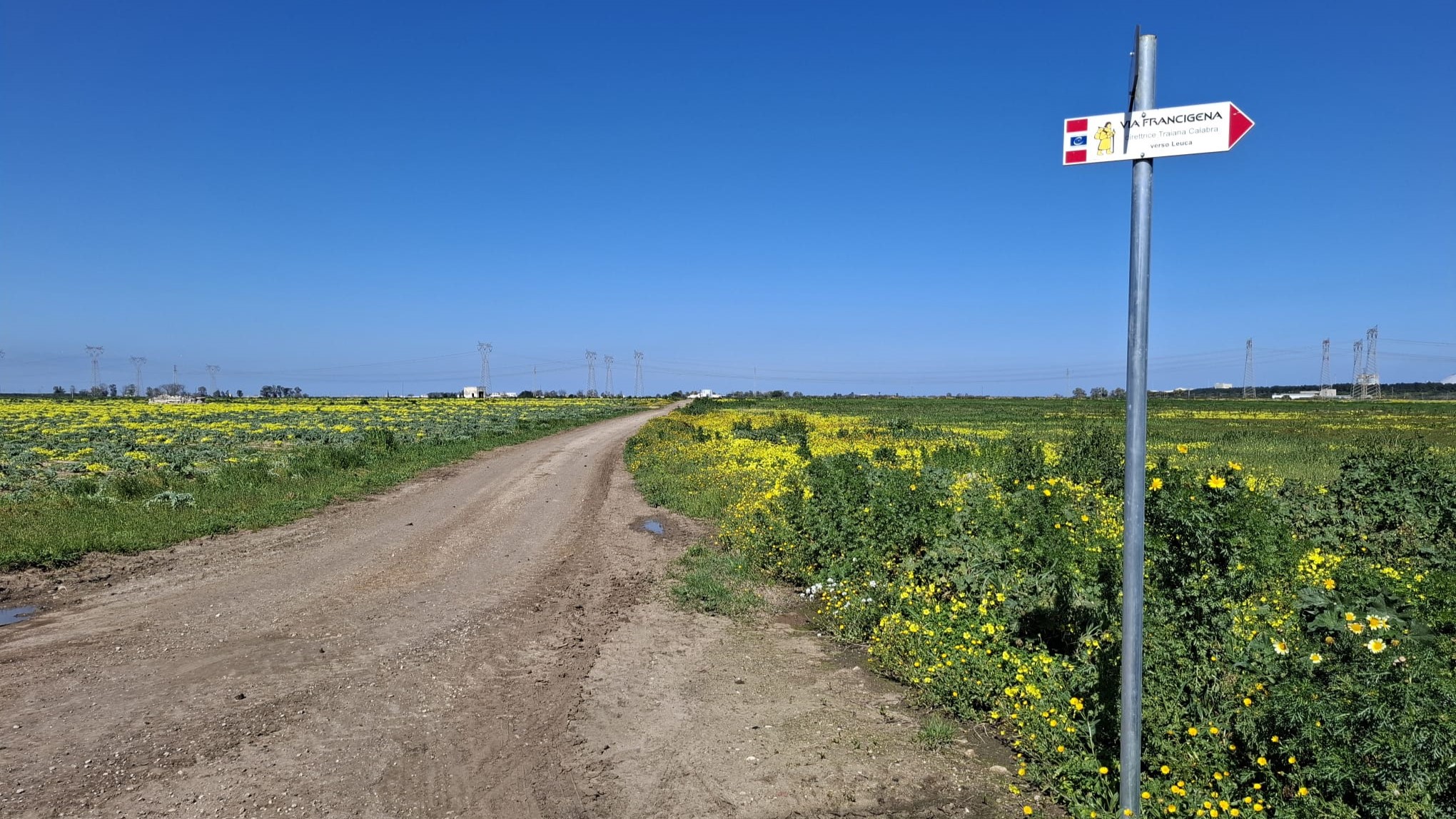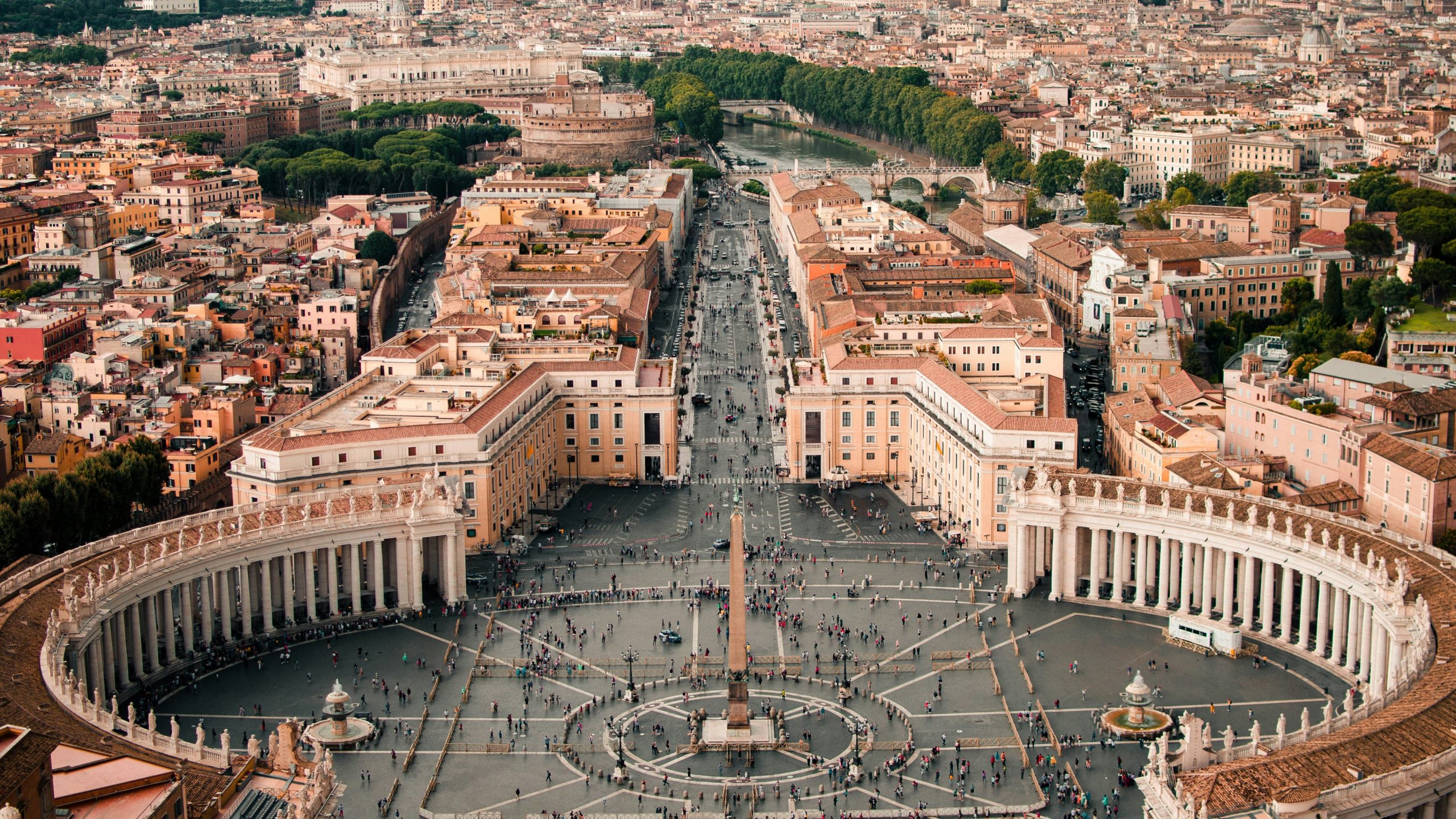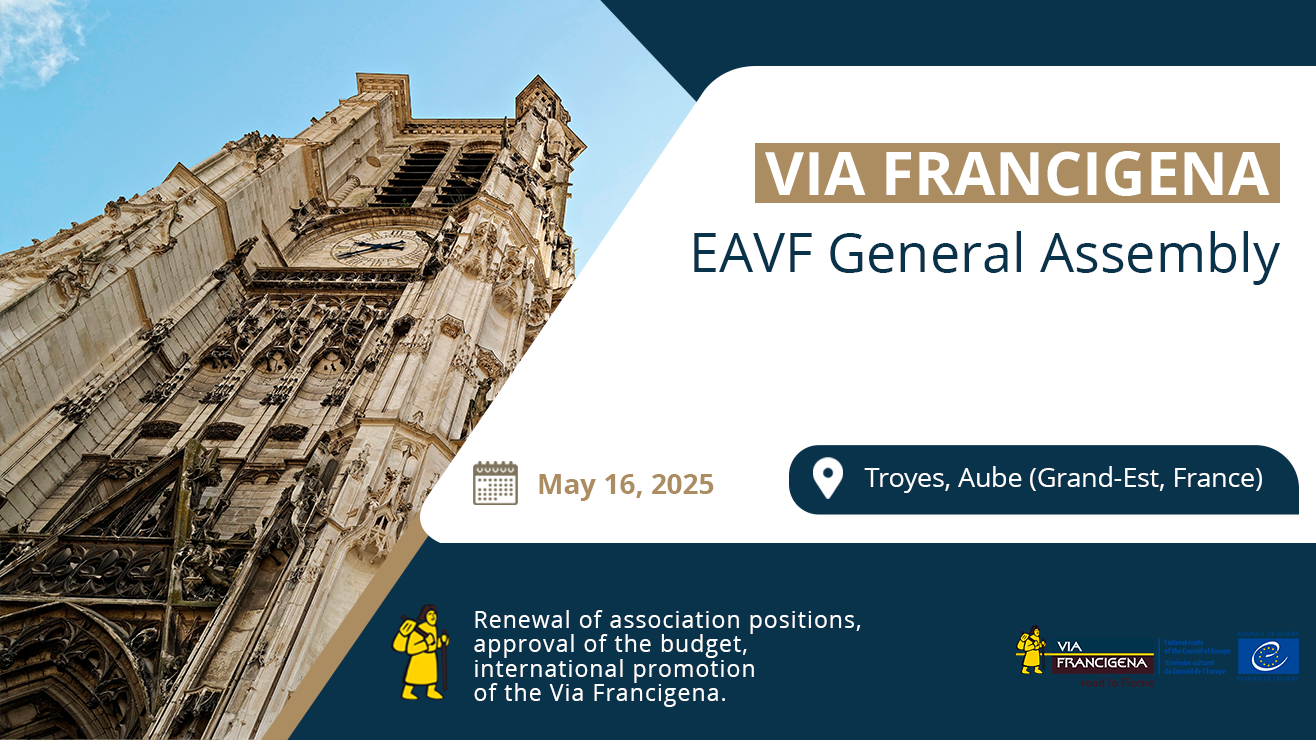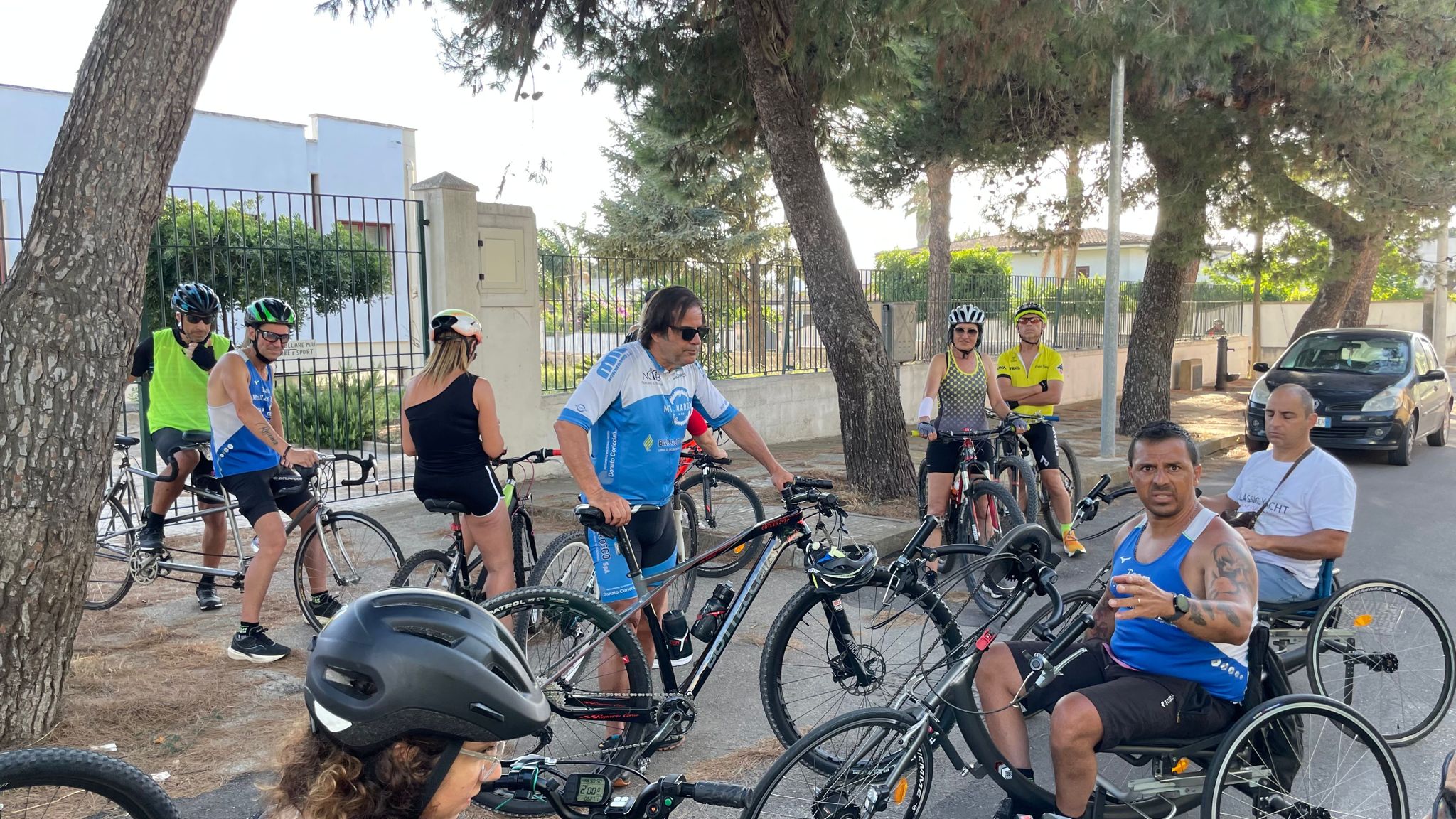On April 17th, Nicole Franciolini and Simona Spinola, respectively Social Media Manager and Communications Manager for AEVF, were welcomed by Gaëtan Tornay, Vice President of EAVF, President of the Swiss Association of the Via Francigena (SAVF), and Director of the Tourist Office Au Pays du St-Bernard based in Orsières, to discover the secrets of the winter Via Francigena in Switzerland.
The town, located in the Canton of Valais, is situated at the foot of the Mont Blanc massif, on the road to the Col du Grand Saint-Bernard, which, at 2,473 meters in altitude, marks the highest point of the entire Via Francigena route, as well as the border between the Swiss and Italian sections of the path, which enters the Aosta Valley from the Col.
The staff thus traveled part of the eleventh stage of the Swiss Francigena, from Bourg Saint-Bernard to the Col du Grand Saint-Bernard, the gateway to the Italian Alps, in a magnificent winter panorama: abundant snowfall and sub-zero temperatures required the use of snowshoes and all necessary safety equipment – shovel, probe, and ARVA – under the careful guidance of an expert. Along the way, two small shelters offer a safe resting point for ski mountaineers and travelers, with a ready-to-use fireplace, a kitchenette for tea or a quick hot meal, and a phone to call for help if needed.
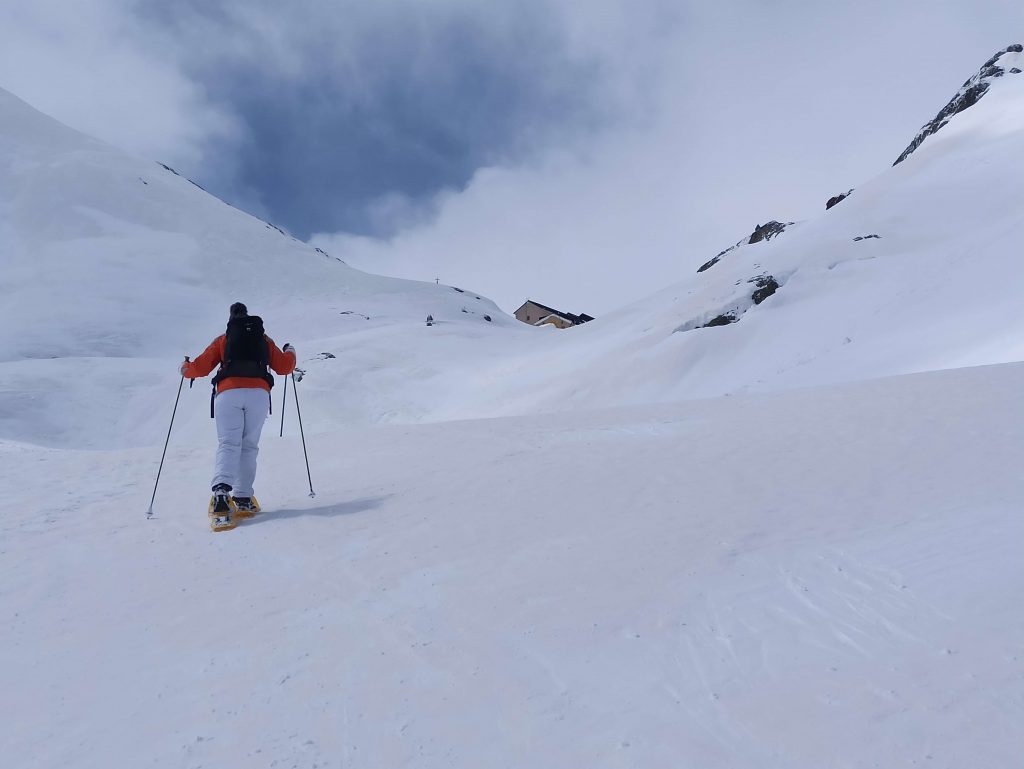
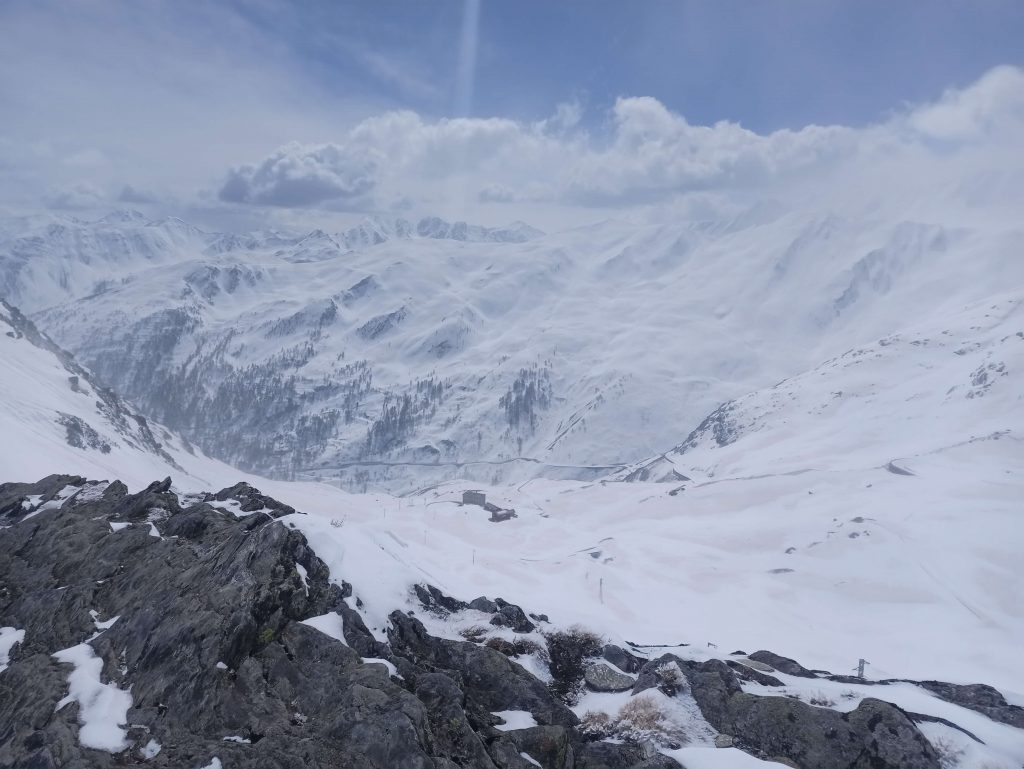
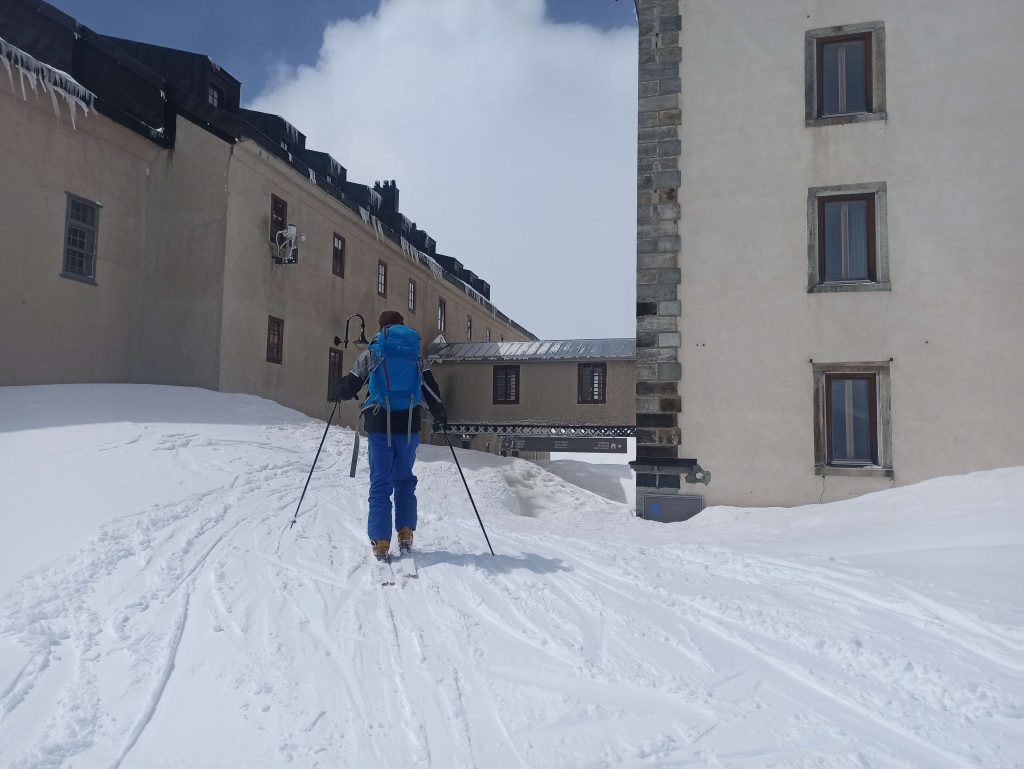
An unforgettable experience, made even more special by the overnight stay at the Hospice du Grand Saint-Bernard, open 365 days a year, which welcomes travelers and enthusiasts of ski mountaineering and winter sports. The structure, built in 1050 by the canons of the order of Saint Augustine, has 120 beds and offers various lodging options with the possibility of having breakfast, lunch (also packed) and dinner in a context of sharing and simplicity. Connected to the Hospice is a hotel that opens in June when the valley in front, completely frozen during the colder months, reveals the picturesque lake. A few meters from the complex, the customs mark the border between Switzerland and Italy, where the statue of Saint Bernard watches the passage of pilgrims.
The Col du Grand Saint-Bernard has always been a place of particular importance since the time of the ancient Romans who worshiped Jupiter Penninus, protector of travelers, while in the Middle Ages, Saint Bernard of Menthon had a monastery built there to provide hospitality to pilgrims heading to or returning from Rome. The imposing monastery was further expanded in the nineteenth century and now houses a museum dedicated to the history of the pass, open during the summer months.
The entire complex of the Hospice and adjacent structures is easily accessible by car during the warmer months by taking the SS27 road, which is closed and impassable due to snow from October to early June.
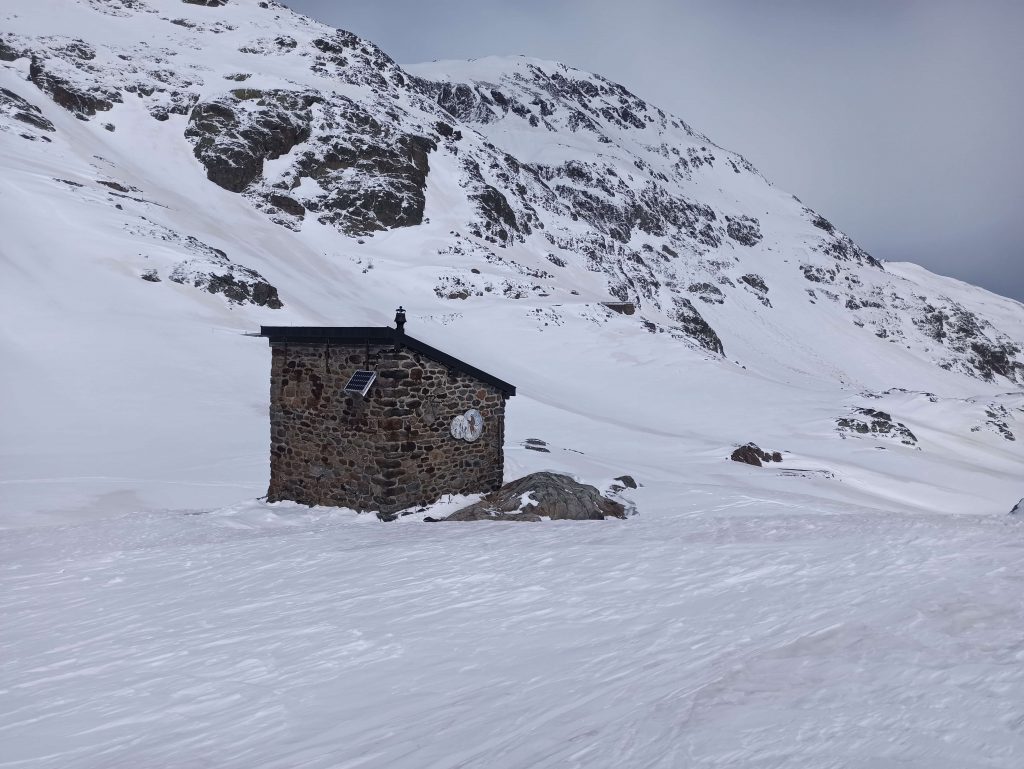
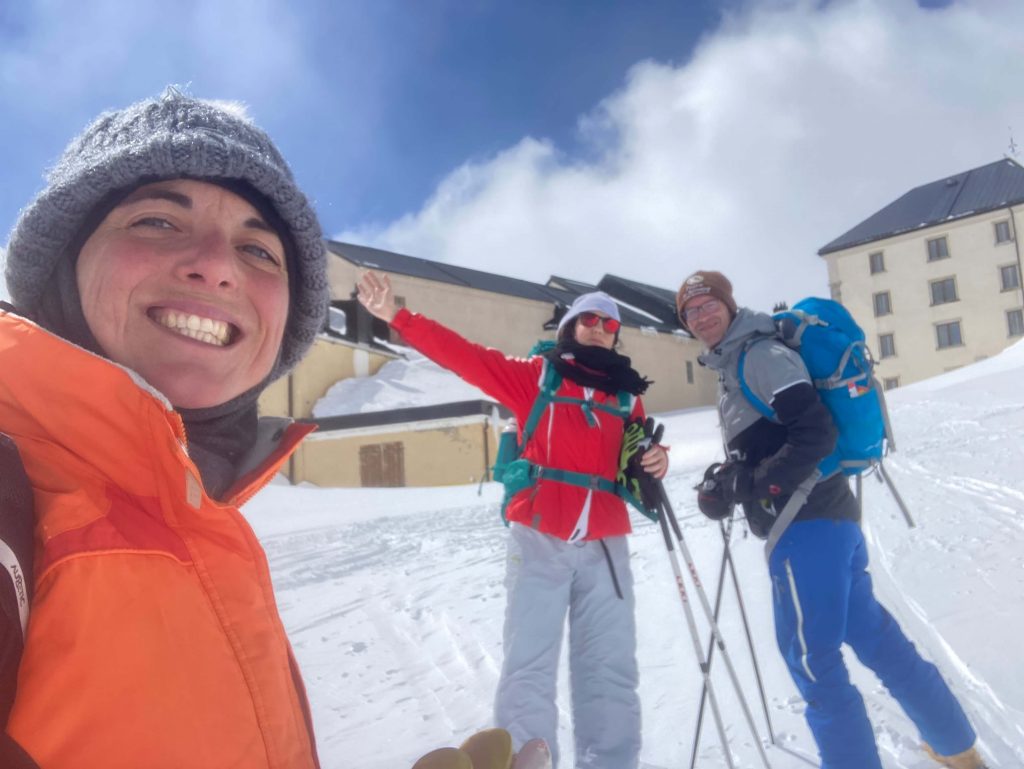
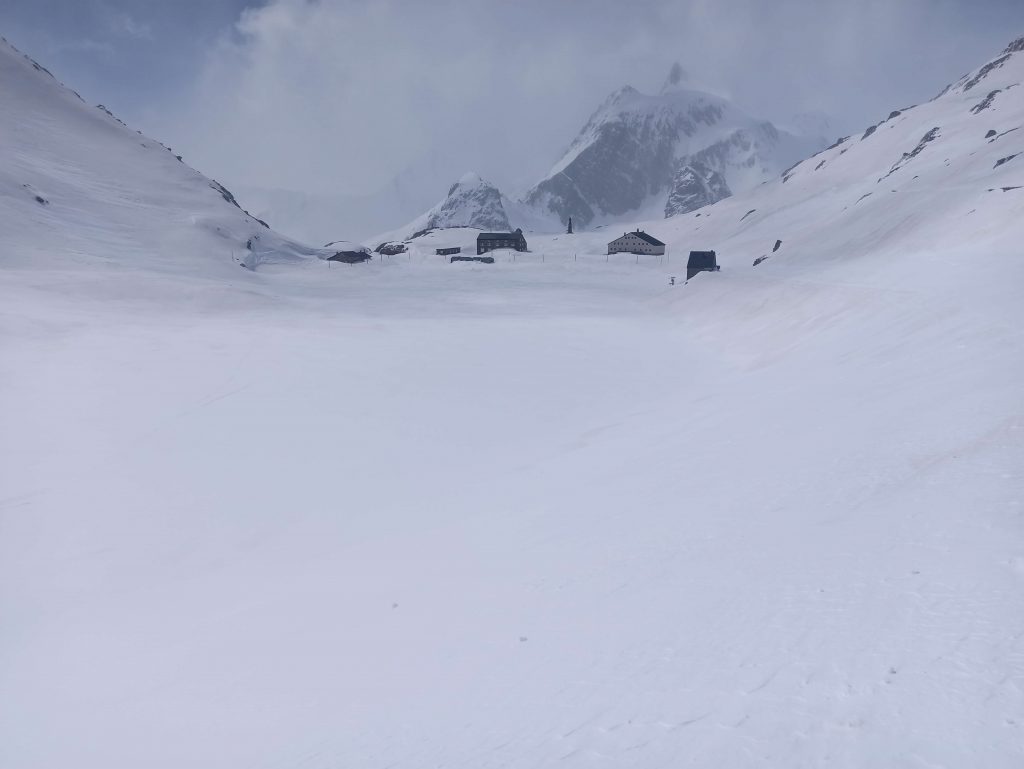
It is impossible to talk about Saint Bernard without mentioning the famous dogs originating from Central Asia, which have served at the pass since 1650 as guard and rescue dogs in case of avalanches. These splendid specimens, present at the Col 12 months a year until 2005, spend the coldest months at Barryland, the foundation that traces the history of the pass and the Saint Bernard breed with a permanent exhibition: currently, the foundation is being expanded and by 2025 will offer visitors new themed areas.
The snowshoe hike at minus 10 degrees confirmed to the staff that the Swiss Francigena can be traveled year-round, even on its most challenging stages, as long as one carefully checks the weather and prepares for the ascent with appropriate equipment, suitable physical preparation, and the company of a certified guide who can assess the risks and dangers of an area of unique beauty, where nature dominates among breathtaking valleys and slopes.
“Reaching the hospice of Grand Saint Bernard in winter is a unique experience, and the contrast with the busy road during the summer and the numerous tourists who visit the place is surprising. Personally, I greatly appreciate the winter atmosphere, especially in the truly special setting of the hospice”.
Gaëtan Tornay



